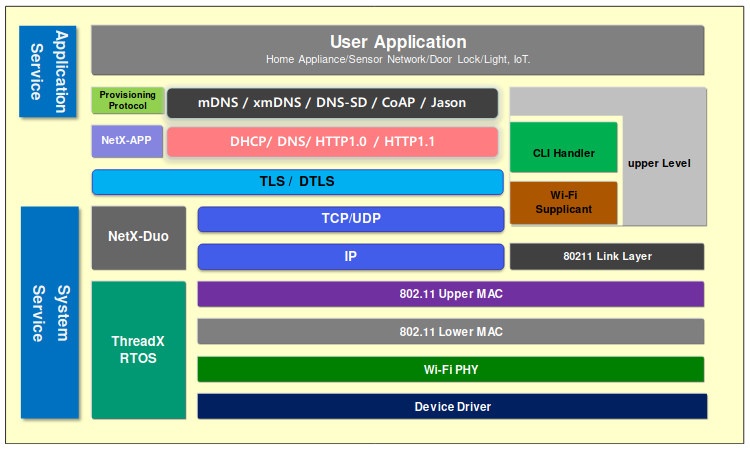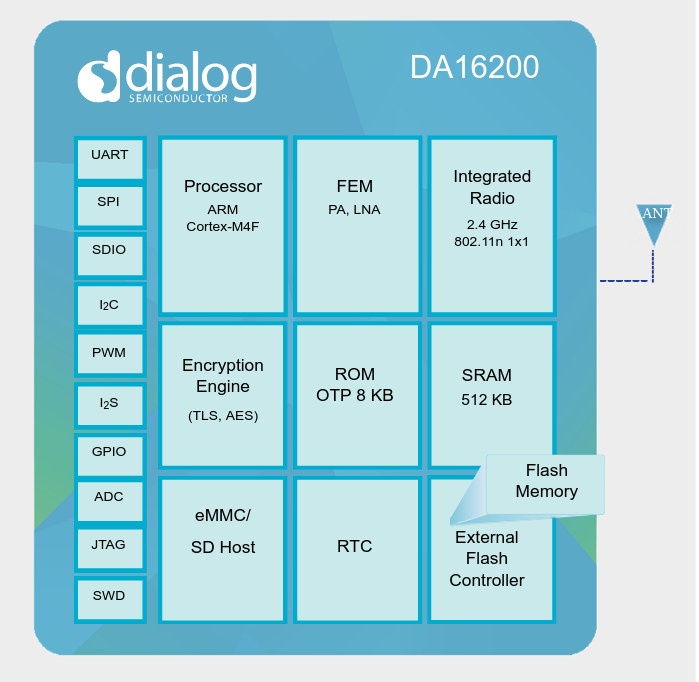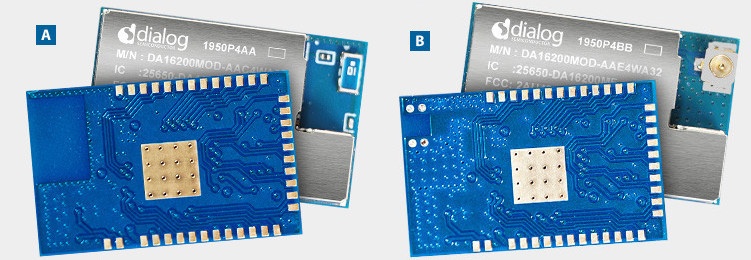WiFi is omnipresent, and many IoT devices are relying on the wireless standard for connectivity, but as most of you will already know, WiFi suffers from high-power consumption and may not always be suitable for battery-operated devices.
There are always battery optimization tricks to use WiFi on battery-powered devices, for example, a solar camera using PIR to only record and transmit video when needed, or a board optimized to consume as little as possible in deep sleep waking up only when necessary. Those tricks are not applicable to all use cases, so Dialog Semiconductor has launched DA16200 Wi-Fi SoC delivering year plus battery life for always-connected Wi-Fi IoT devices.
DA16200 key features and specifications:
- MCU Core – Arm Cortex M4F @ up to 160 MHz
- Memory – 512 KB SRAM
- Storage – 256 kB ROM, 8KB OTP ROM, external flash controller, eMMC, SD host
- Connectivity
- 2.4 GHz, 20 MHz channel bandwidth 802.11n 1×1 WiFi 4 up to 72 Mbps; WiFi 802.11s Mesh.
- Integrated power amplifier (PA) up to +20dBm), low noise amplifier (LNA) with -99.5dBm sensitivity, and RF switch
- Wi-Fi Security – WPA/WPA2-Enterprise/Personal, WPA2 SI, WPA3 SAE, and OWE
- Supported modes – Station, SoftAP, and Wi-Fi Direct (GO, GC, GO fixed
- Peripherals
- 4-channel 12-bit ADC for sensor interfaces
- 3x UARTs, SPI Master/Slave, I2C Master/Slave interface
- I2S for digital audio streaming
- 4-channel PWM
- Individually programmable, multiplexed GPIO pins
- JTAG and SWD
- Security
- Hardware encryption engine (TLS, AES)
- Secure booting
- Secure asset storage
- Supply
- Operating voltage – 2.1V to 3.6V (typical: 3.3V)
- Digital I/O Supply Voltage – 1.8V / 3.3V
- Black-out and brown-out detector
- Power management unit
- On-Chip RTC
- Wake-up control of fast booting or full booting with minimal initialization time
- Integrated DC-DC and LDOs
- Supports three ultra-low power sleep modes
- Package – 6x6mm, 0.4mm pitch, 48QFN; 3.8×3.8 mm, 0.4 mm pitch, 72-pin fcCSP
- Temperature Range – -40°C to 85°C
The chip can work in standalone more without any other microcontroller since it contains the full network stack needed for the target applications, or alternatively it could be connected to an external microcontroller.

The DA16200 achieves ultra-low power consumption thanks to VirtualZero technology with virtually no power consumption in sleep while not actively transmitting or receiving data and extending the battery life as long as a year or more depending on the application. The chip is also said to implement “advanced algorithms” enabling it to stay asleep until the exact moment required to wake up to transmit or receive. This makes it ideal for smart home applications such as door locks, thermostats, sensors, pet trackers, asset trackers, sprinkler systems, connected lighting, video cameras, video doorbells, wearables, and other IoT devices. It is available as a chip or as a module with a built-in antenna (A) or an external antenna (B).
Now if you had such a great product, you’d probably be eager to provide power consumption numbers on your product page, product brief, and/or datasheet. I checked all three, but nothing, and instead I had to rely on an article from EETimes to find some details:
“Most of our customers’ applications utilize small batteries such as AAAs, AAs, and rechargeable lithium ions or use coin cells,” Cohen continued. “However, it is possible to leverage energy harvesting if the energy harvesting device can produce an output power of about 85mA. That type of output power is only needed when in active Tx mode. With VirtualZero, devices can maintain Wi-Fi connectivity at as little at 200nA (0.2uA).”
You’ll find more details about Dialog Semiconductor DA16200 WiFi SoC and modules, including technical documentation and software, on their respective product page here and there.

Jean-Luc started CNX Software in 2010 as a part-time endeavor, before quitting his job as a software engineering manager, and starting to write daily news, and reviews full time later in 2011.
Support CNX Software! Donate via cryptocurrencies, become a Patron on Patreon, or purchase goods on Amazon or Aliexpress






